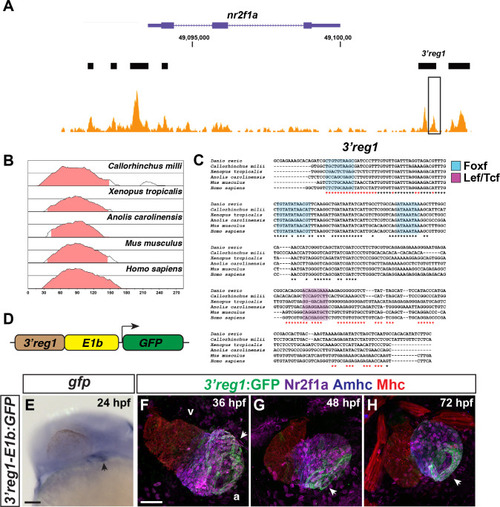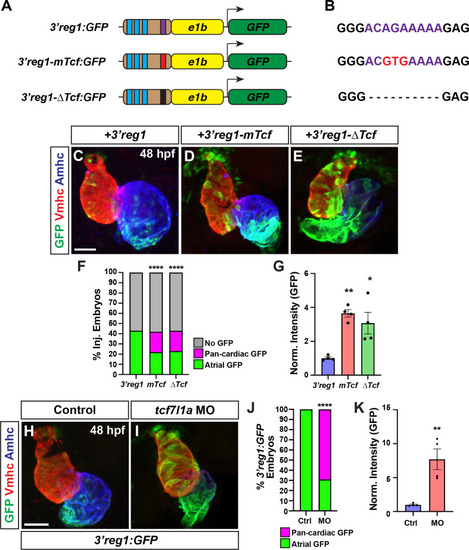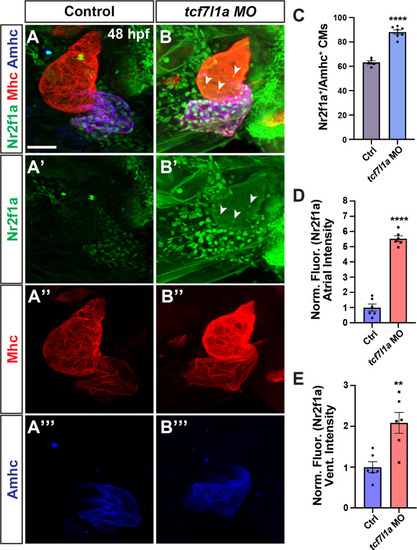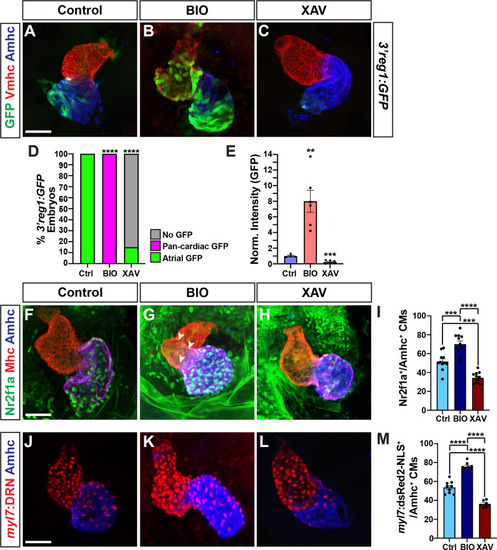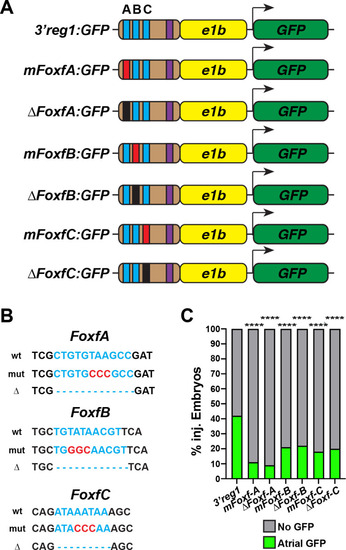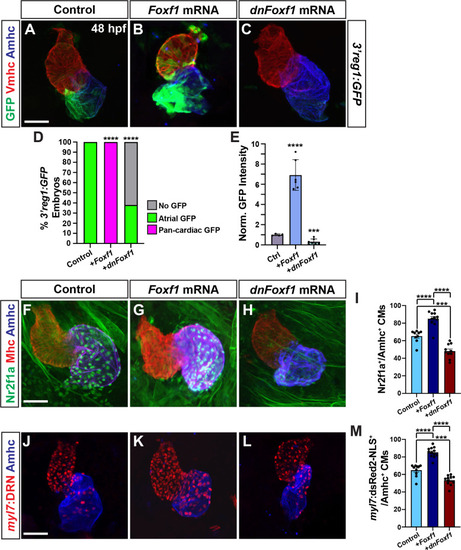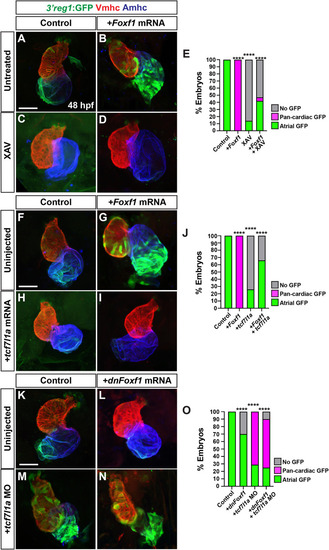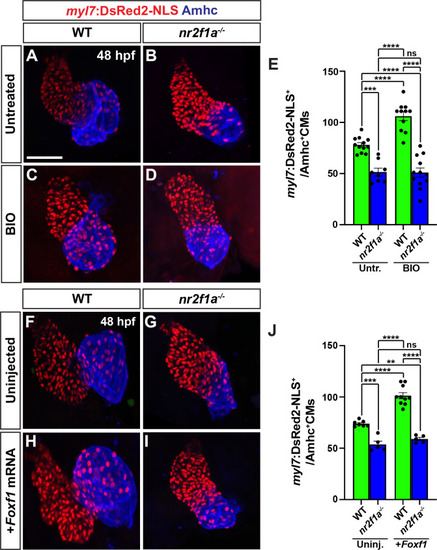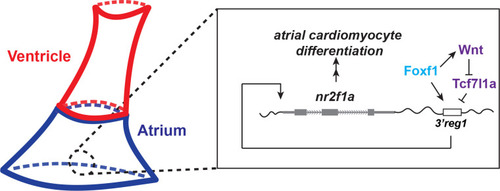- Title
-
A Foxf1-Wnt-Nr2f1 cascade promotes atrial cardiomyocyte differentiation in zebrafish
- Authors
- Coppola, U., Saha, B., Kenney, J., Waxman, J.S.
- Source
- Full text @ PLoS Genet.
|
The |
|
Tcf7l1a restricts |
|
Tcf7l1a limits Nr2f1a+ cardiomyocytes within the heart. |
|
Wnt signaling promotes |
|
Foxf1 sites are required for |
|
Foxf1 promotes |
|
Tcf7l1a limits the ability of Foxf1 to promote |
|
Wnt signaling and Foxf1 require Nr2f1a to promote a surplus of cardiomyocytes. |
|
Wnt signaling and Foxf1 require 3 |
|
A Wnt-Foxf1-Nr2f1a cascade directs atrial cardiomyocyte differentiation. Model depicting the Foxf1 and Wnt signaling-dependent regulatory network that controls Nr2f1a expression and the role of the |

